صفاقس
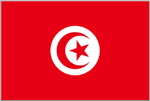
Seaside second city of Tunisia

Sfax may be the second city of Tunisia, but it is considerably smaller than the capital, Tunis. It was founded in 849 and has a similar population as Edinburgh, Scotland. It sits about halfway down the Mediterranean coast between Tunis and the Libyan border, and is quite a pleasant place as a stopover, being much quieter and less hassle than the capital. Sfax also has an interesting medina.
Like everywhere I visited in Tunisia, I spent only one night in Sfax, in a basic little hotel within the medina itself, which was great. There was so much going on just outside my window, I didn’t have to go far for entertainment.
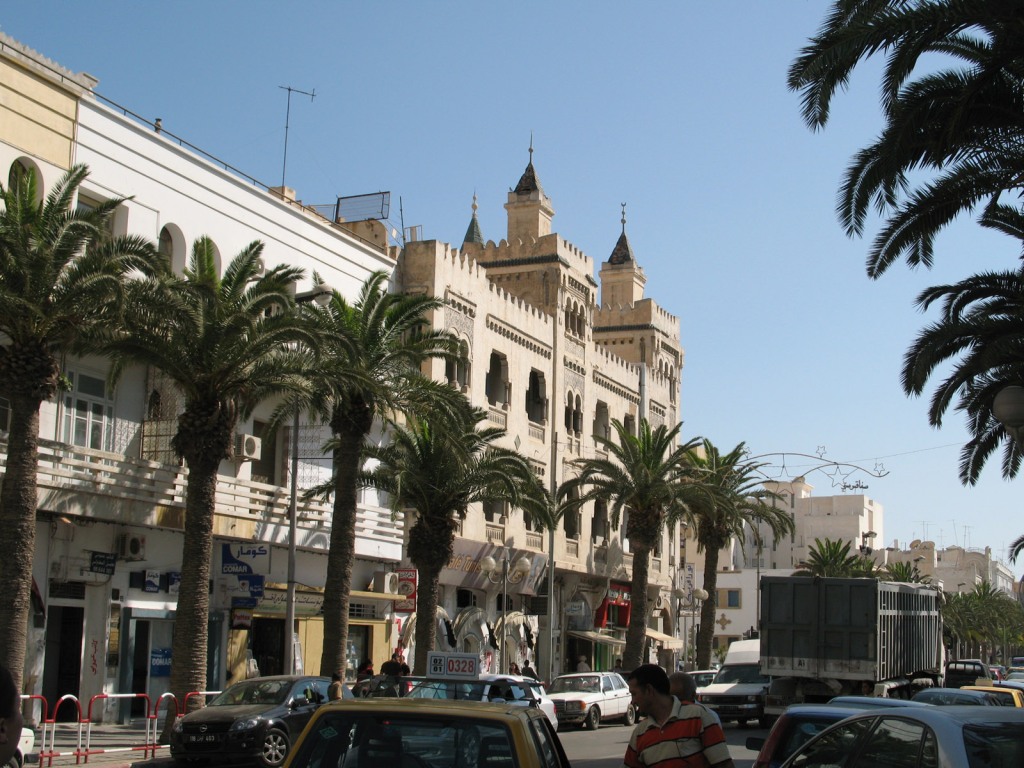
Every city in Tunisia has an Avenue Habib Bourguiba, named after the country’s first president following independence from France. This is Sfax’s version of that avenue, seen as I emerged from the railway station.
The Municipal Palace or city hall of Sfax was completed around 1906 in a very Tunisian style but by a very French architect.
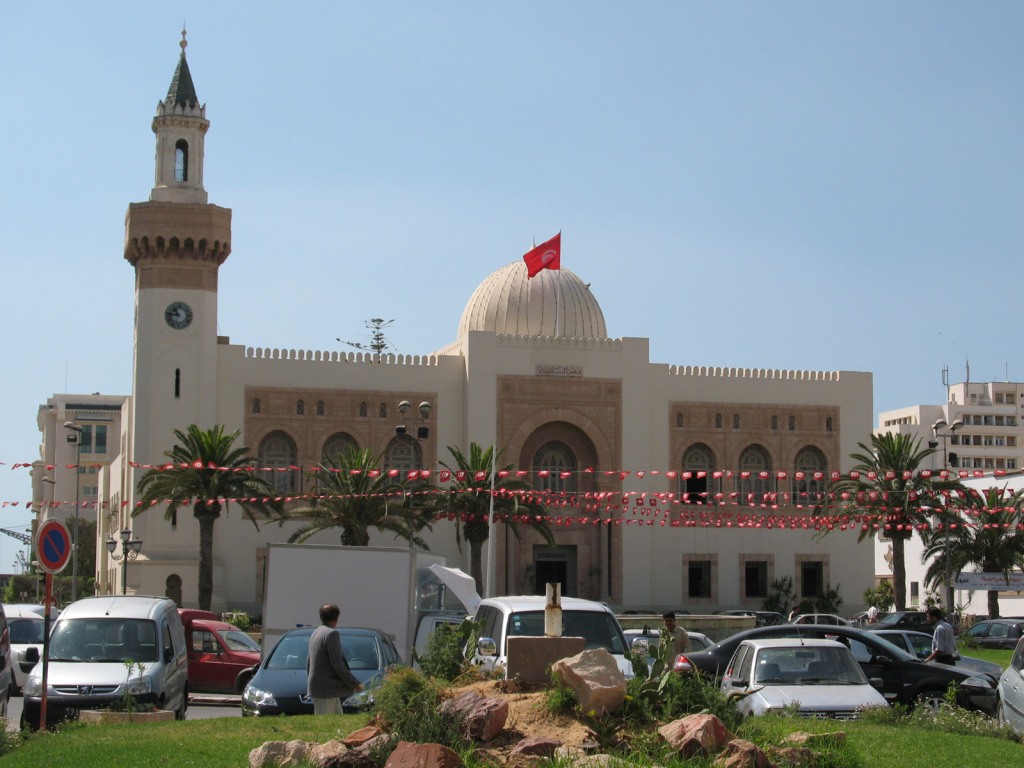

The city hall faces straight down the axis of Le 100 Metre, towards the gates of the ancient medina.
The three gates of Bab Diwan, main entrance to the medina of Sfax. It is also known as Bab Bahar, the gate of the sea. The central gate “Porte de France” took its current form in 1909, and the large archways either side were opened up shortly after independence in 1956.

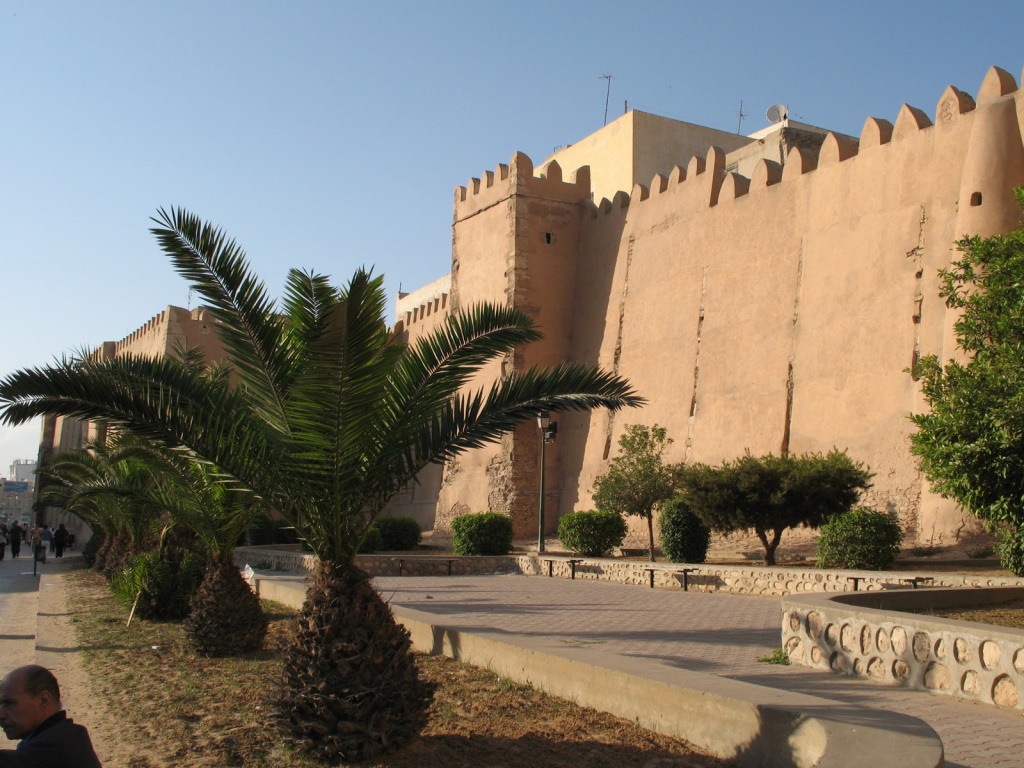
The walls of Sfax medina are very well preserved and still encircle the entire old city, being largely unmodified since 1306. The medina in an Islamic city is generally the fortified part, the oldest and windiest. That’s windy, not windy, although some in my experience have been notably windy.
One of the busy souks within the medina, this was near the north gate Bab Jebli around the corner from my hotel.


The covered souks of Sfax are where some of the film “The English Patient” were filmed.
Minaret of the Great Mosque of Sfax, standing in the centre of the medina since its very foundation in 849 AD. The current minaret was built around the original in the 11th century.

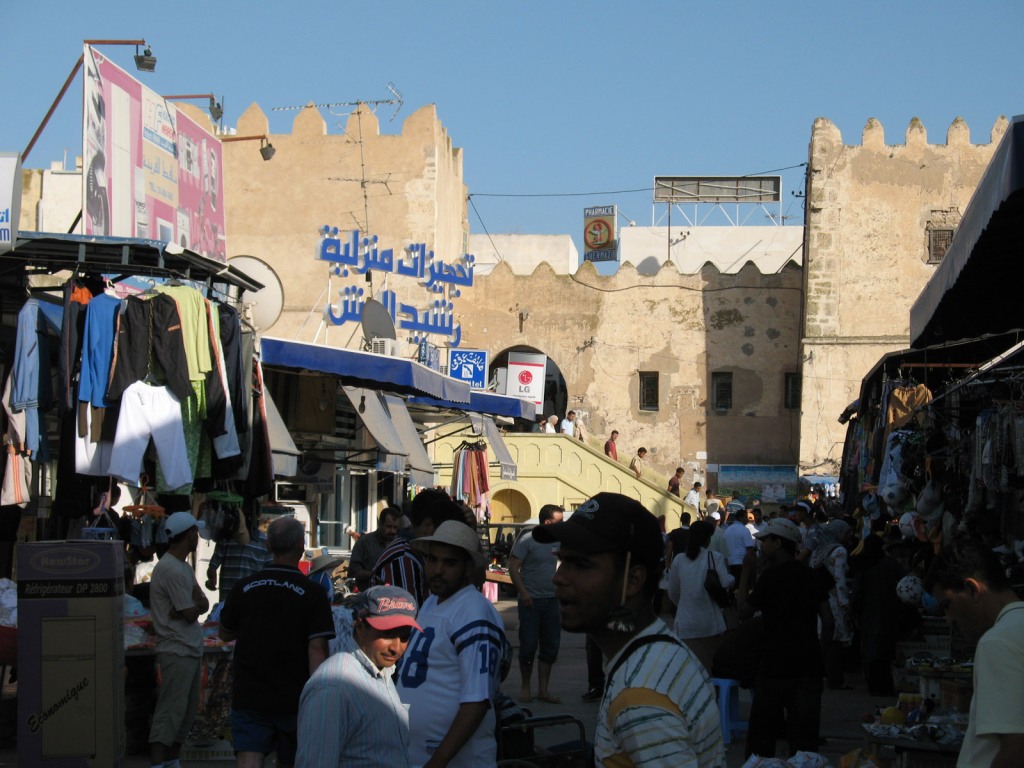
Bab Nahj El Bey is one of the more modern medina gates, cut during the 20th century and near to the original northern gate, Bab Jebli. My hotel was a couple of streets inside.

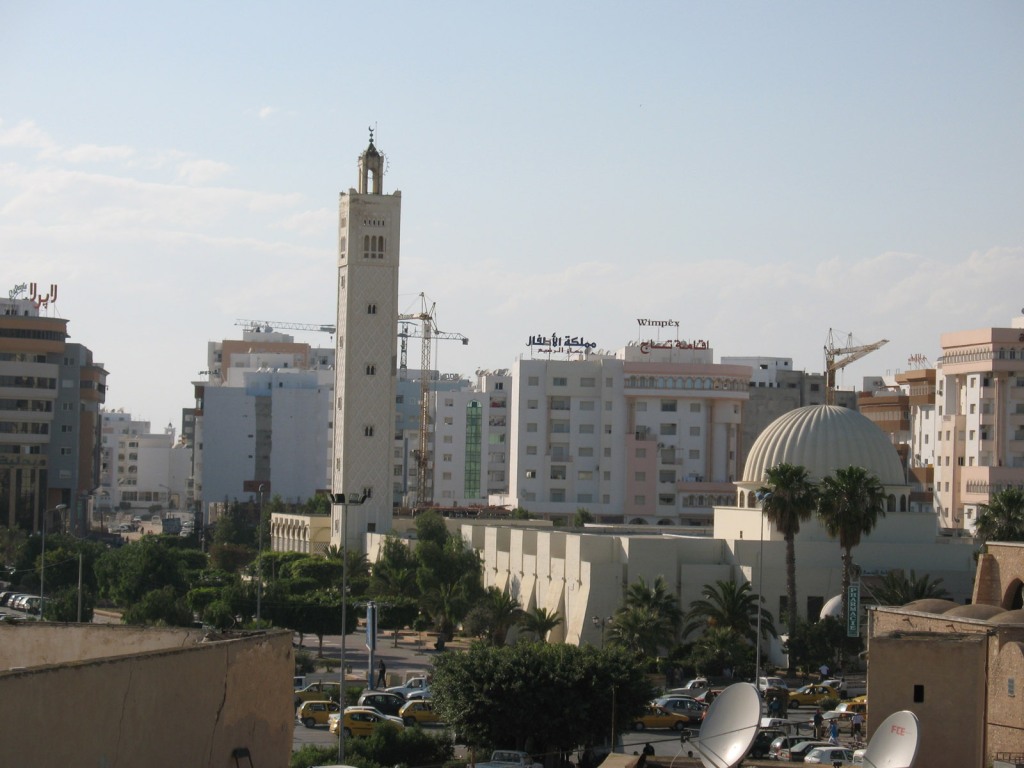
Sidi El Lakhmi mosque is one of the larger modern mosques just outside the medina.
At night the souks are ruled by a population of cats alone. This picture wasn’t even taken especially late, only about 10pm. I guess the good people of Sfax like a good night’s sleep.

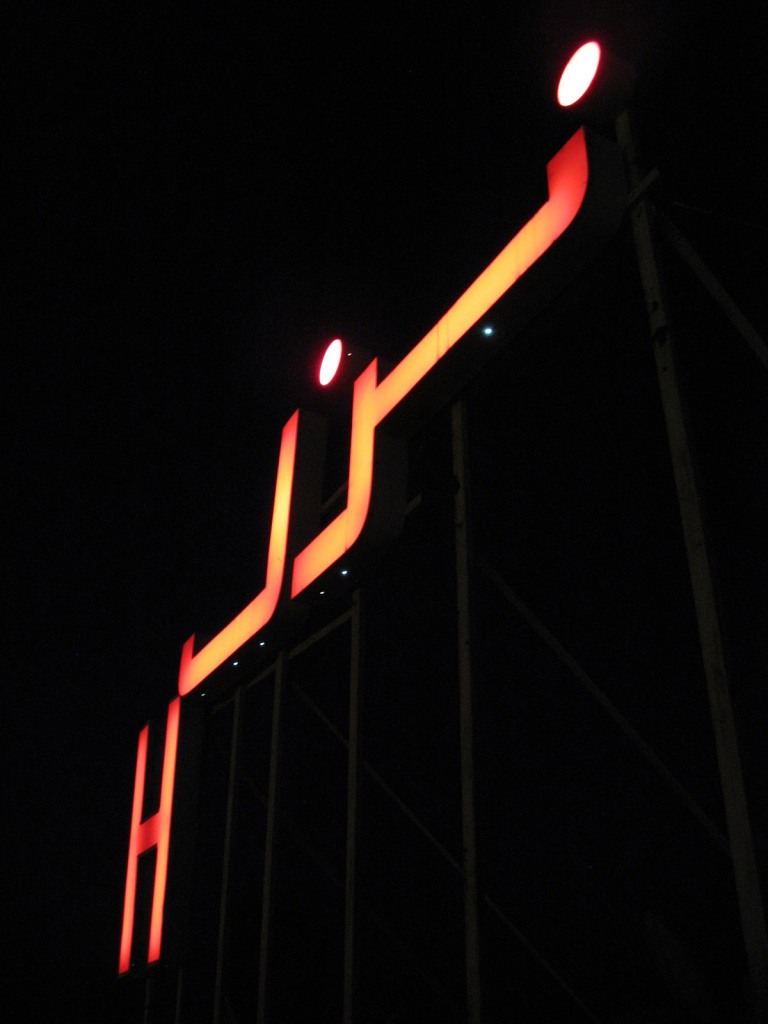
This sign was on top of my hotel, and although my Arabic isn’t great, I’m still perplexed as to what it says. My best guess is “Nazl”, whatever that means, but the last letter that looks like an English “H” isn’t any that I’m familiar with.
Sfax represented the end of the line for my voyage to the Sahara, at least, the end of the railway line. From here onwards, the louage (shared taxi) was the transport of choice. You buy your ticket at the depot, and hang around next to your designated vehicle until enough folk show up, all pile in then go bouncing across the desert. I didn’t ever have to wait more than an hour to get going. Next stop, Tataouine!

Created 2008 | Updated 2023
